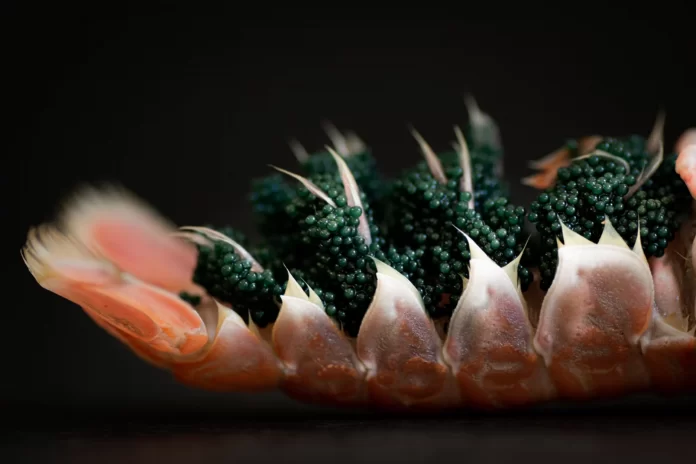One of the most famous and expensive delicacies in the world is salted unfertilized fish roe. “Black caviar” is traditionally called caviar of fish from the sturgeon family.
The coloration of black caviar varies greatly and depends on the particular species of sturgeon, its age, health, and the body of water where it grew up. Usually, conventionally black caviar varies in color from light gray to radical black. However, in some cases, it may even have a light golden color while remaining a “black caviar”. Such exclusive caviar is particularly prized.
Ready-to-eat caviar is obtained from the ovary of the fish from which the caviar grain is extracted. The ovary is the fish eggs enclosed in the ovarian membrane. The caviar grain is the caviar freed from the connective tissue of the ovary.
Well, here’s more about black caviar and why it’s so expensive.
Where is black caviar procured
In the past, most of the world’s black caviar was produced by sturgeon catches in the Caspian and Black Seas. As a result, the population of wild sturgeon has drastically declined due to overfishing, and now more and more black caviar is produced on farms, in closed reservoirs that can, in principle, be found in any region. Such aquaculture caviar is cheaper. Caviar from wild sturgeons is becoming increasingly scarce around the world, causing prices to rise.
Sales of caviar from wild-caught fish are strictly regulated by the Convention on International Trade in Endangered Species of Sturgeon.
Caspian caviar derived from sturgeons raised in the wild is the authentic example of what is called “black caviar” in movies about millionaires and bandits. It’s terribly expensive, and its elite varieties are also very scarce.
Some argue that the taste of aquaculture caviar is poorer, with fewer tones and nuances. However, in fact, the taste of caviar depends on the living conditions of the fish and what it is fed.
A proper fish farmer understands that demand depends on the taste of caviar, and therefore feeds the fish special food and doesn’t keep them in a cramped cement pool. In this case, the difference, if any, between aquaculture and “wild” caviar is visible only to connoisseurs and specialists.
What is the difference between the caviar of different species of sturgeon
Each species of sturgeon caviar has its own unique qualities, from color to flavor. For example, great sturgeon caviar is smooth and oily, with a nutty taste close to hazelnut.
A common characteristic of quality caviar is the specific sensation of the eggs bursting in the mouth. It’s also the main criteria to distinguish the real caviar from the fake one. If there’s no such a feeling, then the caviar is at best of very low quality, over-salted, over-saturated with preservatives, and over-frozen. At worst, it’s simply counterfeit, derived from minced fish, seaweed, flavorings, and gelatin.
Caviar is divided into two sorts, depending on such qualities as size, color, hardness, taste, and flavor. The first grade is the hardest and largest eggs. The second grade is slightly lower in these two qualities.
How is caviar procured
The highest quality caviar is obtained by catching female sturgeons that are ready to spawn. In the wild, sturgeons are caught for caviar when they migrate from the sea to freshwater rivers to lay their eggs. Depending on size, sturgeon can lay up to several million eggs.
On fish farms, the maturity of the eggs is determined by ultrasonic.
The fish are killed to produce the eggs. In the case of wild fish, this isn’t an option. In the case of aquaculture fish, there’s an alternative: the eggs can be extracted under anesthesia and the fish can be kept alive. On the one hand, the fish has to be reared for 12-17 years before it reaches sexual maturity, and of course, it’s simply not profitable to kill it at once.
On the other hand, the slaughter method doesn’t need as much salt and doesn’t require pasteurization, so fresh black caviar can be obtained year-round. These two considerations are the guiding factors for sturgeon farmers.
Why is caviar supposed to be a delicacy
Caviar is a nutritional product rich in protein, amino acids, iron, and vitamin B12. It has a restorative effect on the body, increases immunity, improves metabolism, and is extremely useful for a number of other parameters. The demand for caviar grows if people’s purchasing power increases.
However, it’s difficult to breed caviar. A female sturgeon don’t start laying eggs until 12-20 years later, depending on the species. The great sturgeon (beluga), too, may take 20 years to reach maturity. The fish spawns only once every few years.
Each step of caviar production and delivery to the consumer is a delicate and time-consuming process.
The taste of caviar reveals itself at its best when it’s only lightly salted, without the use of preservatives. However, such caviar is only stored for a few weeks. It cannot be frozen for longer storage. Moreover, even highly salted caviar is very poorly tolerated by freezing – the eggs are damaged and stop bursting in the mouth.
Each package of caviar is the result of manual effort. The ovary is carefully extracted from the fish and the caviar from the ovary, then carefully washed, sieved by egg size into first- and second-grade (the egg size and, accordingly, the sieve cells vary depending on the sturgeon species and specific conditions), and then the ruined and damaged caviar is selected by hand.
All these factors determine the high price of the product.
What is the price of black caviar
Black caviar of the highest quality, derived from sturgeons reared under natural conditions, is now an exclusive commodity, usually offered at closed venues, on a club basis. Prices for it start at $2,000-4,000 per pound and reach $10,000-20,000 in some cases.






